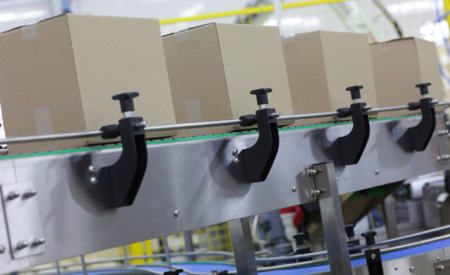5 Effects of Data Center Standardization
What’s a data center manager’s worst nightmare? Systems that are difficult to design, deploy, maintain and manage. These factors are not only frustrating, but also cause a host of problems: high costs, slow deployment, a potential for downtime and challenging scalability.
Increasing efficiency through data center standardization – from power, cable and cooling to racks, physical security and services – is the key to solving these problems. When systems and components are changeable, scalable, repeatable, understandable and integrated, there is vast potential for time-saving, cost-saving data center design, installation, operation and maintenance.
Employing standardized data center infrastructure – eliminating the potential for complex, unique, hard-to-solve problems – offers several benefits.
1. Easier Scalability
The density and capacity your data center requires today isn’t what you’ll need in 5 or 7 years. That’s why it’s so hard to futureproof, trying to predict what you’ll need down the road – and if you’ll have room to accommodate the necessary infrastructure additions.
Data center standardization allows for optimal space configuration, establishing the infrastructure required now with confidence in knowing you’ll easily be able to scale up in the future – without massive upfront costs or data center expansions. As technology requirements change, additional “building blocks” can be added without re-engineering the entire system or space.
2. Freer Staff Resources
When standardized data center components are implemented, less training and troubleshooting time is required. Everything works the same, equipment is easy to understand and narrower skillset ranges are needed to maintain hardware – all because the systems and components look, function and respond in a similar way.

Instead of hours spent troubleshooting to solve a new problem that just cropped up, data center managers can dedicate more resources to the IT layer supported by the infrastructure (the actual work being performed by the IT equipment).
3. Streamlined Maintenance
If your data center is currently made up of services and solutions from several vendors, you already know how difficult it is to manage patches, upgrades and overall maintenance.
By utilizing standardized data center hardware, you deal with common parts, common technology and common upgrade approaches – all of which makes maintenance smoother and faster, saving you time, resources and money.
4. Fewer Opportunities for Downtime
Human error is the cause of the majority of data center downtime – reducing it offers the largest opportunity to improve availability.
Mistakes can happen almost anywhere, from manufacturing defects to misdiagnosis of a problem. By standardizing data center processes and systems, technicians become extremely familiar with documentation, maintenance and repairs, resulting in fewer mistakes due to lack of knowledge or awareness. The likelihood of typing in the wrong command, flipping the wrong switch or pulling the wrong cable is significantly reduced.
Data center standardization allows you to spend less time bringing systems back up after problems caused by human error, and less time on phone calls related to downtime. When standardized components can be removed and quickly replaced during failure – regardless of the cause – business disruption is kept to a minimum.
5. Faster Deployment
Configuration and deployment happens quicker when components and connections are standardized and simplified. If data center standardization is used, it’s also possible that fewer pieces of equipment will need to be installed.

When moves, adds and changes (MACs) or other reconfigurations are needed, modular components can easily be removed, rearranged and reconnected.
How Belden Helps You Standardize
Belden offers a variety of solutions and services to implement data center standardization at all levels, allowing for changeable, scalable, repeatable, understandable and integrated data center environments.
From solutions such as Erika Violet for OM4 fiber (to ensure that OM3 and OM4 fiber aren’t accidentally mixed up) and shuffle cassettes that fit into any Belden housing, to CFD (computational fluid dynamids) modeling that allows you to virtually “test” data center solutions and reconfigurations before implementing them, we’re here to help you achieve better system performance, flexibility to make changes and deploy faster upgrades. Learn more about how Belden reduces complexity.
